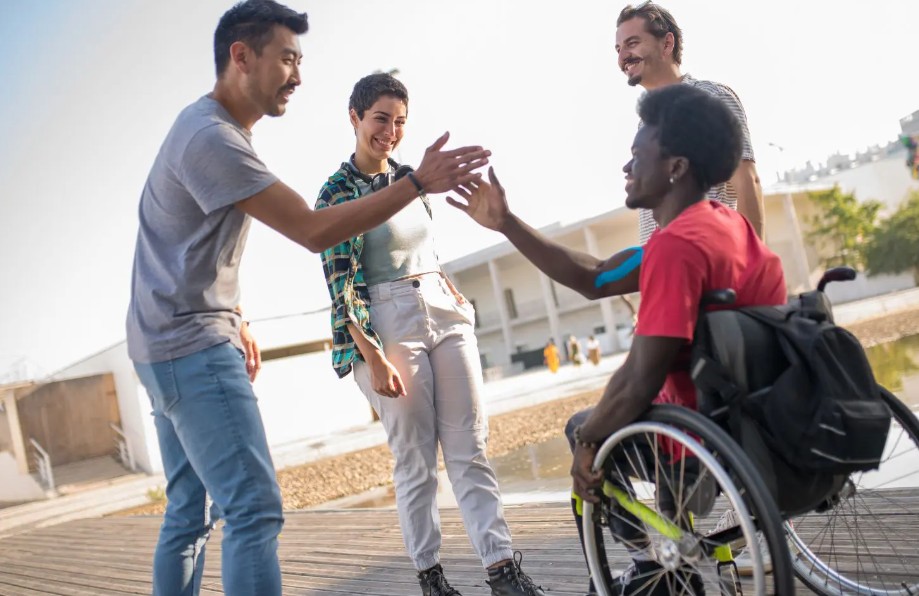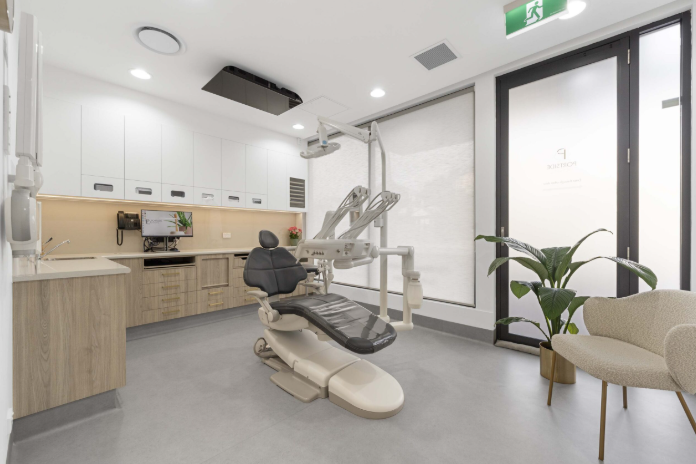“You’re getting your stem cells back, baby,” Conner’s mother, Richelle Brooks, said on the other side of the bed, wiping her tears with a tissue as excited hospital employees crowded the room.

“To fix your boo-boo,” Adam added, using the phrase doctors suggested his parents employ when talking with Conner about the ultra-rare genetic condition, cerebral adrenoleukodystrophy, or CALD.
The devastating disorder strikes boys, usually between the ages of 4 and 10, causing rapid loss of cognitive and physical abilities, including hearing, vision, and movement, often only months after symptoms first appear. Most boys die within a few years.
Conner, who had spent eight days undergoing a grueling drug regimen to make room in his bone marrow for the stem cells, stirred but stayed asleep as nurses whooped and clapped during the half-hour, one-time infusion on March 16.
A spirited boy from upstate New York who loves the online game Roblox and has no obvious symptoms, Conner is the first patient to receive the gene therapy since the Food and Drug Administration approved it in September.
Marketed as Skysona, it is one of six gene therapies cleared since 2017 that have transformed the outlook for disorders once considered hopeless. It has also renewed thorny questions about how the health care system can afford such breathtakingly expensive medicines.
Skysona was developed by Bluebird Bio, a Somerville biotech that specializes in gene therapies for rare diseases. Conner’s disorder afflicts only hundreds of patients in the United States according to experts. Few people had heard of it until it was depicted in the 1992 movie “Lorenzo’s Oil.”

In a clinical trial that followed CALD patients for two years, 91 percent of 32 children who received a single dose of Skysona survived without developing any major functional disabilities. Another 35 children underwent the treatment in a follow-up study, researchers say, and the results have held up so far. The first patient in the trials, a boy from Northern Ireland, received it at Boston Children’s Hospital almost a decade ago and is still doing well.
But Skysona poses the risk of potentially serious side effects. And because it treats a disorder that causes an irreversible buildup of toxic fatty acids and inflammation in the brain, the gene therapy must be given before symptoms appear. After that, the neurological damage is done. That means early detection of the faulty gene that causes the disease is crucial.
Over the past decade, 36 states — Massachusetts not among them — have mandated that newborns be screened for the genetic mutation through a blood test, partly as a result of prodding by a Brooklyn woman whose 7-year-old son died of CALD in 2012. New York became the first to enact the requirement a year later, enabling Conner’s parents to learn he had the defect days after his birth in 2017.
“It was a nightmare to find out the news, but looking back, it was a true blessing,” said Richelle Brooks, of Swain, N.Y., who works for a collection agency. (Her fiance, Adam Hess, Conner’s father, is a stay-at-home dad helping to raise him and three older siblings.)
Because of those test results, Conner had to undergo magnetic resonance imaging of his brain regularly to determine whether he might start developing the most devastating form of the disorder, as roughly a third of patients with the defective gene do. Unfortunately, a lesion that appeared on his MRI in September indicated he almost certainly would.

“There’s clearly a flame that’s about to start spreading like wildfire,” Dr. Florian Eichler, Conner’s neurologist and a CALD expert at Massachusetts General Hospital, said of such lesions. Eichler helped run the trials that were led by researchers from MGH and Children’s Hospital, rival hospitals that acted as collaborators.
Skysona’s arrival has elated patients’ families and doctors, validated decades of research by Harvard-affiliated hospitals and Bluebird, and underscored the potential for gene therapies to halt and, perhaps, even cure inherited diseases.
“I hesitate to say ‘cure’ because they’re still at risk for something from their disease,” Dr. Christine Duncan, Conner’s transplant specialist at Boston Children’s, said of CALD patients. But the gene therapy appears to halt the relentless neurological decline that leads to a vegetative state or death in most patients.
Duncan helped oversee the Skysona trials and testified before a panel of advisers to the FDA that voted 15-0 last June to recommend the treatment be approved. She said she expects Conner to lead a relatively normal life, although he will still need to take a steroid to compensate for an adrenal gland deficiency related to the disease. And he may develop peripheral nerve damage as an adult that could affect his ability to walk and even necessitate a wheelchair, as well as other problems.
For more than 30 years, doctors have known that stem cells from the blood of healthy donors can halt CALD. That made those cells, which are the body’s raw materials, the only proven treatment before Skysona. Donated cells travel to the bone marrow, multiply, and drift into the brain. There they slowly turn into guard cells of the central nervous system called microglial cells. In CALD patients, those cells appear to stop the buildup of fatty acids that damage protective sheaths around nerve cells as a result of the defective gene.
But it can be hard to find a suitable donor. Stem cells work best when they come from siblings, whose genetic makeup is more likely to be compatible with that of the patient. Cells donated by someone other than a sibling often behave as though the patients’ own cells are a threat and attack them, a potentially life-threatening complication called graft-versus-host disease.
But because CALD runs in families, siblings are also more likely to have the same genetic defect, making them ineligible to donate the cells. Indeed, Conner’s 13-year-old brother has the same faulty gene, although it hasn’t led to the cerebral form of the disease.
In the end, less than a quarter of patients have siblings who can become donors, said Duncan.
The researchers behind Skysona sidestepped the donor conundrum. They used stems cells removed from the blood of patients themselves, inserted a good gene into those cells in the laboratory, and infused them back into the bone marrow. The patient’s modified stem cells halted the disease as effectively as stem cells donated by healthy, compatible siblings and better than stem cells from unrelated donors.
Skysona doesn’t come without a serious risk. Three of the 67 children who received it in the trials developed blood cancers believed to be related to the gene therapy. Although the cancers were treatable, Duncan said, the risk must be weighed by families considering the gene therapy.

As impressively as Skysona performs, critics of the pharmaceutical industry say it also illustrates an alarming trend: drug prices soaring into the stratosphere.
At $3 million, Skysona became the most expensive drug ever when the FDA approved it. That sum doesn’t cover the cost to administer it or to provide related treatments at the hospital, which, in Conner’s case, included eight debilitating days of chemotherapy to make room in his bone marrow for his altered stem cells. Medicaid is covering his medical expenses, his mother said, because she can’t afford the premiums for the health insurance offered by her employer.
Whenever a gene therapy wins approval, it seems to shatter the record set by the previous one for the most expensive drug ever. Skysona’s price tag broke the record set a month earlier by another gene therapy from Bluebird called Zynteglo, which costs $2.8 million and treats a rare inherited blood disease called beta thalassemia. Barely two months after Skysona was approved, it lost its title as the priciest drug to Hemgenix, a $3.5 million gene therapy for hemophilia B, made by CSL Behring, of King of Prussia, Pa.
Of the six gene therapies cleared since 2017, the cheapest was Kymriah, a Novartis treatment for a rare form of leukemia that costs $475,000. The Alliance for Regenerative Medicine predicts another half-dozen gene therapies could be approved this year.
Dr. Ezekial Emanuel, a bioethicist and vice provost for global initiatives at the University of Pennsylvania decries such eye-popping prices. Skysona, he said, costs about 25 percent more than the lifetime median income for someone in the United States with a bachelor’s degree. “It’s definitely exorbitant,” he said.
Daniel Ollendorf, a drug-pricing expert at Tufts Medical Center, said gene therapies like Skysona can save the health care system money in the long run because children with devastating disorders sometimes live for years with feeding tubes or respiratory equipment, piling up staggering medical expenses.
Nonetheless, Ollendorf, director of value measurement and global health initiatives at the Tufts Center for the Evaluation of Value and Risk in Health, said the Skysona trials were relatively small and that the gene therapy’s durability remains to be seen. He wishes Bluebird had offered to reimburse insurers for the cost of the treatment if it doesn’t work, as the biotech did with Zynteglo, its recently approved gene therapy for beta thalassemia.
Bluebird spokeswoman Jess Rowlands said the company and insurers had little interest in arranging such agreements given CALD’s rarity. Bluebird priced Skysona at $3 million, she added, because the treatment is “urgently needed,” will benefit patients and families, and could save money in the long run. Rowlands said the price had nothing to do with what it costs to make a medicine for a small number of patients, and declined to discuss Bluebird’s profit on the gene therapy.
But Stoke Therapeutics chief executive Edward Kaye ― who has spent more than two decades developing drugs for rare diseases and treated boys with CALD as a pediatric neurologist ― said the startling prices of gene therapies undoubtedly reflect, in part, the massive costs to make medicines used by relatively few patients. “I would be disingenuous to say anything else,” he said.
For his part, Bluebird’s chief executive, Andrew Obenshain, said Skysona’s price tag should be balanced with “the value that the treatment brings to patients and to the health care system. These boys lose the ability to talk, walk, go to the bathroom, and eat by themselves.”

No one needs to explain that to Darcy Gray, who lives near Waterbury, Conn. Her son, Christopher, a precocious, good-humored boy, had been an excellent student, learned to ride a two-wheeler before his third birthday, and earned a blue belt in martial arts. But at the age of 7, in 2016, he began complaining of blurry vision and his hearing seemed impaired.
After a series of medical tests, his family learned that he had CALD and that the disease was too advanced for a stem cell transplant. In a matter of months, he could no longer see, hear, talk, sit up, and eat, and he needed a feeding tube.
Darcy Gray and her husband, Billy, sleep with Christopher, now 14, in the living room because they can’t carry him upstairs to his bedroom. They move him from a hospital-style bed there to a recumbent couch and sometimes take him for a walk outside after strapping him into a wheelchair.
“There’s not a day that goes by that we don’t have grief in our hearts,” Darcy Gray said. “I still hear my son’s voice in my head.”
Given such dire outcomes, Massachusetts insurers appear to be taking Skysona’s cost in stride, partly because the disease is so rare.
Bluebird says that only 5 to 10 patients are expected to get the treatment this year at three US sites qualified to administer it: Boston Children’s, Children’s Hospital of Philadelphia, and the University of Minnesota Masonic Children’s Hospital.
The Massachusetts Association of Health Plans, which represents 14 insurers, recently contacted its members to see whether they will cover Skysona, and none that responded said they wouldn’t, according to Lynda Jackson, a spokeswoman for the association.
Nonetheless, she said, the group “continues to have concerns about the costs of pharmaceutical drugs, including these gene therapy drugs. While many of these therapies are lifesaving, they come with exorbitant price tags.”
Point32Health, the state’s second-biggest health insurer, said it will cover Skysona, as it has other gene therapies for rare diseases. The worry, said its recently departed chief medical officer Dr. Michael Sherman, is what happens when a drug company wins approval for a gene therapy to treat a not-so-rare disorder like sickle cell disease. That blood disorder affects about 100,000 people in the United States.
As it happens, Bluebird is among several drug firms working on a gene therapy for sickle cell, and the company has a lot riding on it. The biotech has struggled financially in recent years and lost more than 97 percent of its value on the stock market since its shares peaked in 2018.
Neither Skysona nor Zynteglo will make the biotech profitable, Bluebird’s chief executive, Obenshain said, but approval of a gene therapy for sickle cell — which the firm hopes to launch early next year — would. “With all three therapies together, that is a sustainable company,” he said.
People familiar with Skysona’s backstory say an unsung hero is Elisa Seeger, of Brooklyn. Her son, Aidan, who loved playing soccer and chess, began having trouble seeing when he was in first grade.

After multiple doctors’ appointments, he underwent an MRI in 2011 that detected a lesion in his brain ― the telltale sign of CALD. Although Aidan already had significant brain damage, he received an unrelated donor’s stem cells at a Duke University hospital. But it was too late, and he died at the age of 7 the following year.
Seeger turned her grief into a crusade and began lobbying state houses to add the genetic defect to the conditions doctors screen for in newborns.
“My son would be here right now if we had this information when he was born in 2004, and we didn’t,” said Seeger, who founded a patients advocacy group called the ALD Alliance, for adrenoleukodystrophy.
Although Massachusetts provides the screening test as part of a pilot program that began in 2018, parents have to opt in. The state Department of Public Health said that nearly 300,000 newborns were screened for the defective gene as of January and 22 were found to have it. An advisory committee to the health department, whose deliberations were delayed during the pandemic, plans to resume meeting this year and may consider making the screening automatic.
Thanks to Aidan’s legacy, Conner’s parents are optimistic that their son will be able to lead a relatively normal life.
Two weeks after the infusion, Conner’s white blood cell count indicated that his modified stem cells were multiplying and circulating in his body, enabling Skysona to stave off damage to his brain. He could be discharged as soon as Sunday.
A few days ago he happily played Roblox in bed and gave a thumb’s up when asked about starting kindergarten in the fall. (He had to delay elementary school a year because of his illness.)
Richelle, his mother, said she had doubts about Skysona when she first heard of it. Those feelings vanished when she went to the Children’s Hospital website and read about the boy from Northern Ireland who received the gene therapy in the first trial 10 years ago. It said he plays soccer now, and featured a picture of him standing with his fists clenched and grinning.
“At that moment,” she said, “I had no more doubts.”

Jonathan Saltzman can be reached at [email protected].







